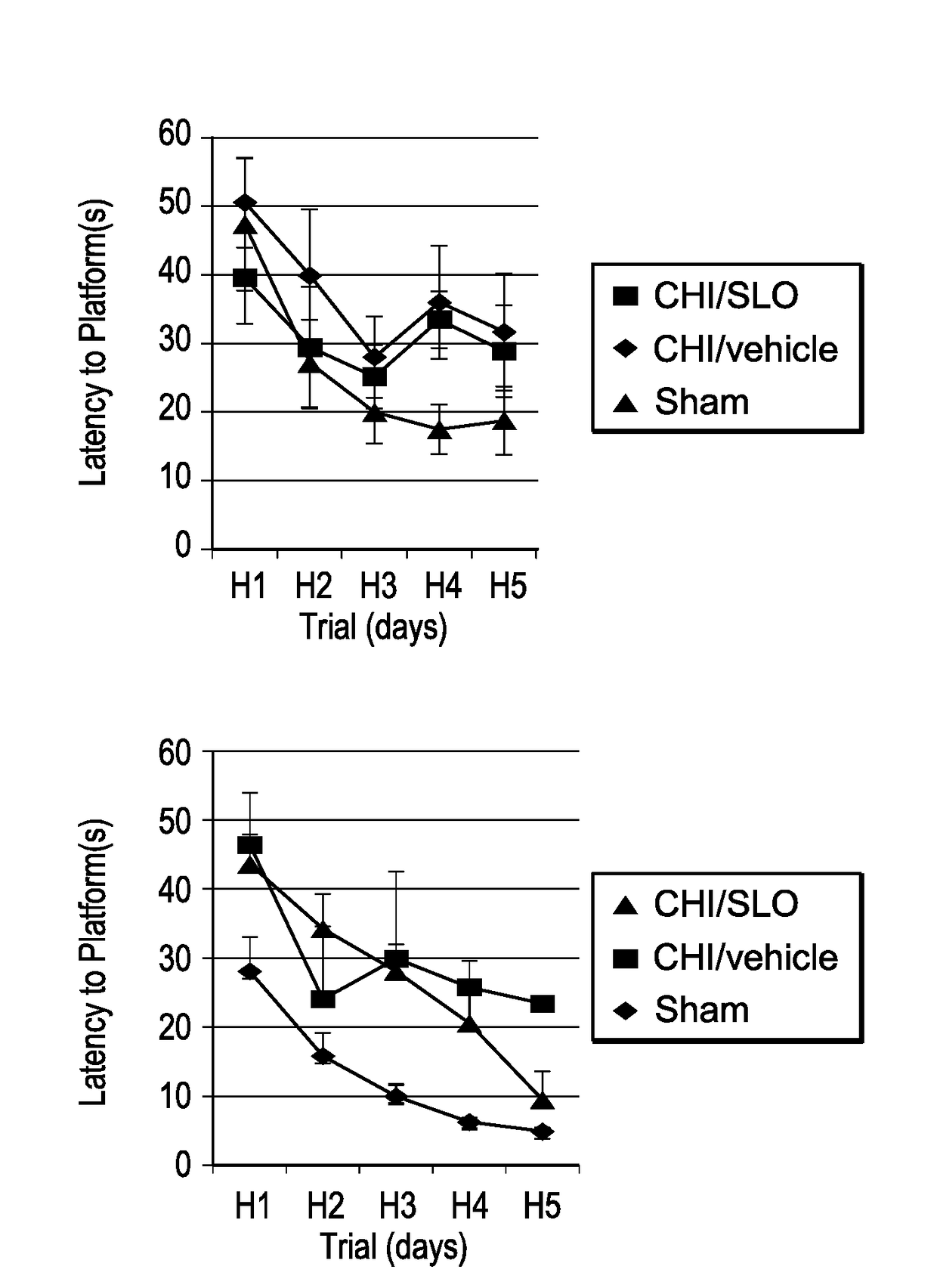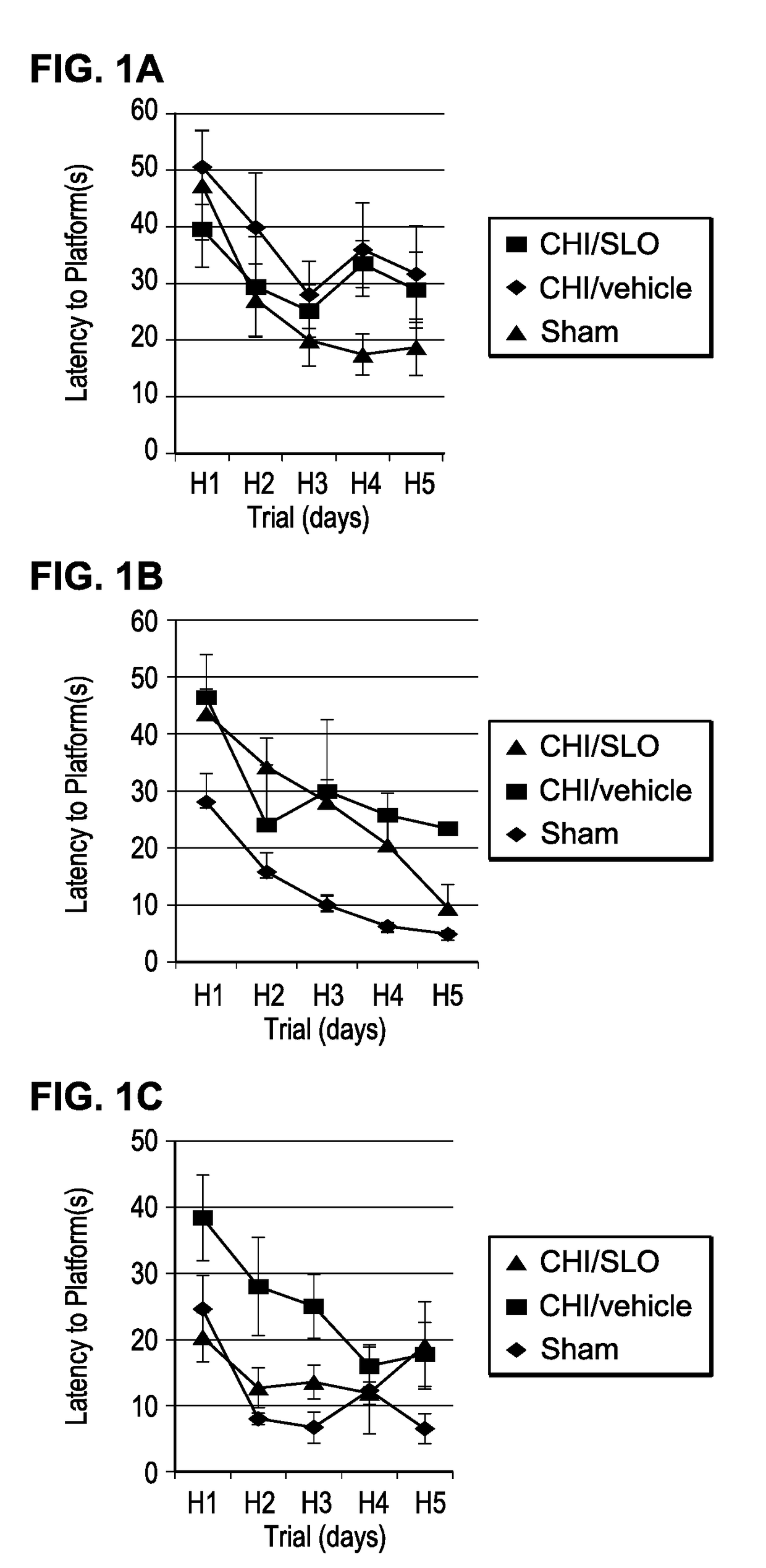Method of inhibiting microglial cell migration and treating traumatic brain injury
a microglial cell and brain injury technology, applied in the field of inhibiting microglial cell migration and treating traumatic brain injury, can solve the problems of undiagnosed and untreated tbi, and injury, and achieve the effect of stimulating brain scarring
- Summary
- Abstract
- Description
- Claims
- Application Information
AI Technical Summary
Benefits of technology
Problems solved by technology
Method used
Image
Examples
example 1
[0045]The following Example demonstrates the ability of SLO to alleviate a variety of ailments associated with traumatic brain injury (TBI) in the brains of ex-NFL players. In these cases, TBI was likely induced by multiple concussions.
[0046]Six former NFL players with a history of TBI which manifested itself with symptoms such as diminished executive functions, social relationships, forgetfulness, confusion and anxiety volunteered to undergo therapy by administration of SLO. Each volunteer was provided with a supply of SLO and instructed to take one drop of SLO four times daily—after meals and before bed. Each drop of SLO was to be administered sublingually. Each drop contained 1.6 ng (about 4 units) of oxidized SLO. Players were monitored by telephone conversation on a monthly basis.
[0047]Five of the six volunteers reported improvements such as enhanced cognition, better memory, increased ability to articulate, better sleep patterns, improved emotional stability, and overall impro...
example 2
[0049]The following Example is directed to treatment of a female subject suffering from the effects of a traumatic brain injury as the result of an automobile accident thirty (30) years ago when the subject was age 19. The subject developed a dropped soft pallet because of nerve damage resulting from the original accident which rendered her speech difficult to understand. The subject suffers from anxiety, impaired short term memory, loss of organization skills and reduced cognition skills.
[0050]The subject was treated with sublingual administration (under the tongue and on the floor of the mouth) of a single drop (0.05 mL) composition comprising 2 units of oxidized streptolysin O in phosphate buffered saline four times daily. The subject did not swallow for 15 seconds after administration of the composition and did not eat or drink anything for five minutes.
[0051]At 40 days the subject appeared calmer that previously, was reading more and took on some new interests watching the morn...
example 3
[0057]The following Example is directed to treatment of traumatic brain injury in a mouse model. Control and test animals were subjected to head trauma daily (for 4 or 7 days) according to the method described in Mannix et al. Annals of Neurology, Vol., 74, No.1 1 pp. 65-75 (2013). Experimental group received doses of SLO (4 IU) subdural in AM and PM of all days of the experiment.
[0058]One aspect of the model focuses on the ability of the test animals to find a submerged (hidden) platform that offers a safe haven upon which they can stand after being injured and placed in a pool of water. This test measured learning process and memory of the tested mice. Non-injured mice (the sham controls) took about 30 seconds to locate the pad on test day one. This time dropped during successive test days.
[0059]Two other groups of mice then received controlled blows to the head and were then treated by administration of the streptolysin O (SLO) therapeutic composition or a placebo. As indicated i...
PUM
| Property | Measurement | Unit |
|---|---|---|
| pH | aaaaa | aaaaa |
| pH | aaaaa | aaaaa |
| pH | aaaaa | aaaaa |
Abstract
Description
Claims
Application Information
 Login to View More
Login to View More - R&D
- Intellectual Property
- Life Sciences
- Materials
- Tech Scout
- Unparalleled Data Quality
- Higher Quality Content
- 60% Fewer Hallucinations
Browse by: Latest US Patents, China's latest patents, Technical Efficacy Thesaurus, Application Domain, Technology Topic, Popular Technical Reports.
© 2025 PatSnap. All rights reserved.Legal|Privacy policy|Modern Slavery Act Transparency Statement|Sitemap|About US| Contact US: help@patsnap.com


